Port-Aviation (Juvisy), France, October 7th - 20th, 1909

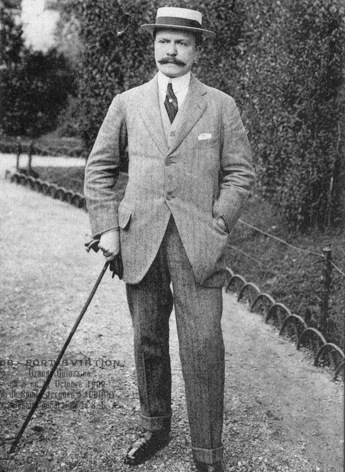
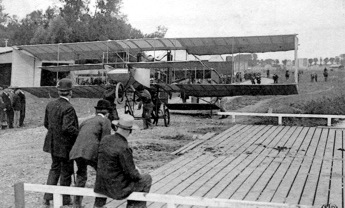

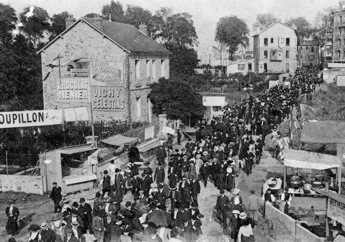


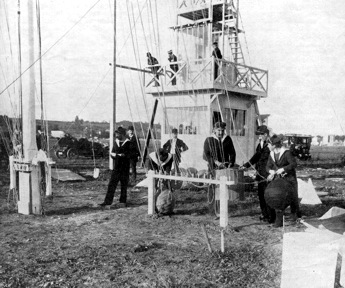
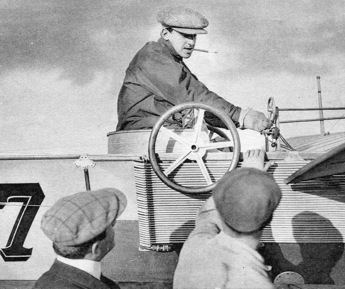




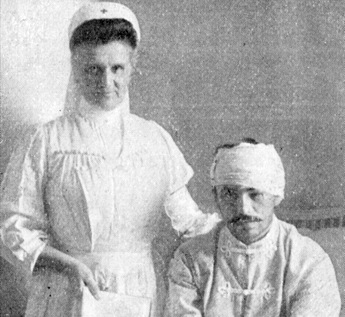

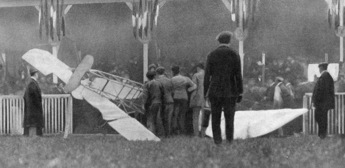


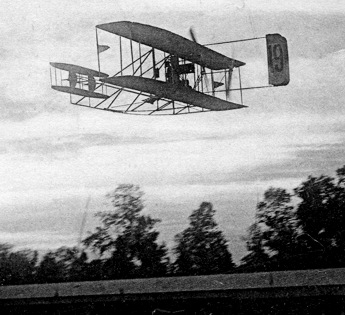

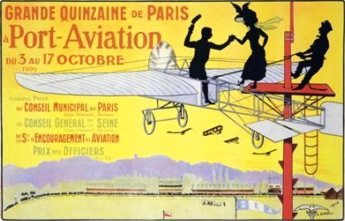
During the summer of 1909 it was becoming obvious that the August
Reims meeting would become the biggest aviation event ever. Seeing
this, the Paris-based organisations Ligue Nationale Aérienne (LNA) and
Société d'Encouragement à l'Aviation (SEA) wanted to give the
Parisians something similar. Paris was after all at the time the
world's third largest town and the centre of the emerging French
aviation industry. In the middle of August it was announced that the
event, labelled as the "Grande Quinzaine d'Aviation"
would be held over a fortnight ("quinzaine" in French) from
October 3rd to 17th. The responsibility of the meeting would be split
between three organisations, with the LNA being responsible for the
first eight days, the SCA for the next six days and the Aéro-Club de
France for the fifteenth day. This led to a long and confusing list of
events and prizes, some of which ran only on a single day while others
could be competed for during several days. The race program contained
18 different competitive events, but all of them are not mentioned in
reports. On the other hand, reports from the race mention prizes that
weren't in the race program.
Since there were no suitable sites in Paris itself it was decided to
hold the meeting at the Port-Aviation airfield, which was situated
between the communes of Juvisy, Savigny-sur-Orge and Viry-Chatillons,
around 20 km south of the centre of the town. This field, the
world's first purpose-built airfield, was operated by the SCA and
had hosted the world's first air races in April and May 1909. The
airfield had several marked courses of different lengths. From the
results it appears that courses of 2 km, 1.667 km and 1.5 km were used
during the meeting. Before the meeting the facilities were expanded
with several new hangars, a signal mast modelled on the Reims one,
enlarged grandstands and automobile parking areas, restaurants, post
office, telegraph and many other spectator services. In addition to the
grandstands a lot of chairs were brought in, bringing the total number
of seats to 30,000. The railway company Compagnie d'Orléans
optimistically promised special train services every four minutes to
the Savigny-sur-Orge station. Several individuals and organisations
offered prizes, resulting in an announced prize sum of 200,000 francs.
Law and order would be ensured by 110 gendarmes on horse-back, several
squadrons of the 27th dragoon regiment and two battalions of the 31st
infantry regiment.
The event quickly gathered a large number of entrants. The list of 43
entrants was bigger than that of the Reims meeting, but it included
several novices, optimists and wannabes from the Port-Aviation flying
schools and hangars. Some were blank entries from manufacturers,
without confirmed pilots. Due to collisions with the meetings in
Frankfurt, Doncaster and Blackpool several of the most famous flyers,
such as Blériot, Rougier and Sommer, were busy elsewhere and didn't
enter. Others, such as Paulhan and Latham, only participated during
part of the meeting, while for example Delagrange and Leblanc did
enter, but never turned up.
Thursday October 7th
The extensive development work on the airfield couldn't be finished
in time, so the meeting had to be postponed by four days. The delay had
the consequence that the split between the responsible organizations
became even more confusing, but had the advantage that it gave the
flyers who had been participating in other meetings more time to
prepare.
The weather was fine on the first day of the meeting, but the patient
spectators had to wait until four o'clock in the afternoon before
they got to see any flying apart from short straight test hops by des
Vallières and Gaudart in their Voisins, Busson in the WLD and the
non-entered Richet (or Richer or Richez, the spelling is different in
different reports...), a pupil of Ferdinand Ferber and his successor as
head of the LNA's flying school, in one of the LNA's Voisins.
Then, at the same time, de Lambert and Gobron made some competitive
flights, de Lambert pitching and rolling in his Wright as it flew low
and caught the gusts between the buildings while Gobron flew higher and
steadier in his Voisin. De Lambert made the longest flight, eight laps
of the 2 km course, during which he posted a time of 11 minutes for the
10 km Prix du Conseil Général de la Seine, which would be contested
during four days. Gobron won the Prix Madame Paul Quinton by flying 2
km in 2:07.6, each lap passing over a balloon anchored at a height of
15 metres, with de Lambert second at 2:10.0.
Friday October 8th
A miserable day with wind and rain, so no flying was possible.
Saturday October 9th
The weather had improved on the next day, but because of the sodden
ground there was no flying until the afternoon. De Nabat, Gaudart and
des Vallières made attempts for the Prix de Lancement, given to the
pilot to take off in the shortest distance from a standing start and
fly a kilometre before landing, but none of them managed to complete
the required distance. De Lambert made the crowds cheer up with a
flight of four laps, followed by a double figure-eight in front of the
grandstands and another two laps. Before the closing of the day, Richet
flew three laps and Gaudart made another short test flight. The flights
made during the day of course counted for the prize for the highest
total distance flown during the meeting, but apart from that there was
no competitive flying.
Sunday October 10th
Sundays were the only holidays for the working French, so this was the
first chance for many people to go to the races and for the first time
in their life see aeroplanes flying. It was also announced that the
popular Latham and Paulhan would probably arrive during the day. It was
estimated that around 300,000 people tried to get to get to
Port-Aviation on that day. All forms of transportation broke down. The
roads were completely jammed with automobiles, bicycles and people. The
train service on the Paris-Orléans line collapsed into complete chaos
under the pressure of an estimated 100,000 passengers. The reporter of
"The Aero" stated that it took him more than three hours to
travel the 20 km from central Paris to Port-Aviation in the morning and
four hours to get home in the night. The frustrated passengers of the
overcrowded trains rioted. They broke the windows of all the trains and
got off the trains in stations and marshalling yards, demolishing
buildings and passing trains and blocking the traffic. The last trains
from the airfield reportedly didn't reach Paris until three
o'clock in the morning. The Minister of Public Works would later in
the week order an inquiry into the cause of the failure in order to
find the responsible.
In contrast, everything worked smoothly for those who eventually got to
the airfield. The weather was fine and Gaudart, de Nabat, des
Vallières, Busson, Richet and Fournier made some short flights, but the
hero of the first Sunday was Paulhan. He took off at around four
o'clock and made the longest flight, completing eight laps
including a pass directly above the ecstatic spectators in the
grandstands. De Lambert then flew seven laps, followed by Gobron, who
flew four laps. Gobron never got up to full speed, since the
carburettor was partially blocked by sawdust collected during a test
run inside his hangar. Latham had a miserable day. He was caught up in
the traffic chaos and had to walk several miles to get to the airfield,
only to find out that his plane, a brand-new Antoinette VII built for
Capitaine Burgeat, wasn't ready. De Lambert won the Prix
Scheurer-Kestner for the best time over one 2 km lap at 2:09.0 and the
Prix de Neuflize for the best time over two laps at 4:18.6. This was
the second day for contesting the Prix du Conseil Général de la Seine.
De Lambert improved his time to 10:52.2 and Paulhan posted 13:37.8 to
place second. The Prix du Conseil Municipal de Paris was also a contest
in which pilots could make efforts on different days. It was a race
over one lap, in which the flyers had to cross the starting line at
less than eight metres above ground, pass over a balloon anchored at 40
metres and then cross the finish line at less than 8 metres. This was
the first day, and de Lambert placed first at 2:27.2.
Monday October 11th
The next day was another perfect day for flying, but as usual there was
no flying in the morning. In the afternoon de Nabat and Busson made
some short flights. Gobron had fixed his engine and flew a fast lap,
winning the day's speed prize with 2:12.2. Fournier had a very
close call when his Voisin got caught in the wash of Gobron's
plane. He lost control over his plane close to the place where the
course crossed the river Fausse Orge. He managed to clear the river by
a matter of yards and very narrowly missed some workmen and
photographers before hitting a bush, which broke some struts and wires,
swung the plane around and stopped it. De Lambert was the only flyer to
make a flight of any distance, covering six laps and thereby taking the
lead in the Grand Prix de la Société d'Encouragement à
l'Aviation, which ran for the first day.
Tuesday October 12th
The weather had taken a turn to the worse, with higher winds and risk
for rain. The crowd of around 40,000 waited patiently until four
o'clock in the afternoon before Paulhan brought out his plane. He
first made an attempt on the slow flight prize, covering the required
three laps of the 1.667 km course in 6:11.0. He then continued for
another sixteen laps, staying in the air for almost 40 minutes, again
flying above the grandstands and showing his complete command over the
airplane in the tricky conditions. While Paulhan was flying, de Nabat
made a good take-off in a new Koechlin plane with a more powerful 40 hp
Gyp engine, but suddenly nosed down right in front of the grandstands.
The plane hit the ground heavily, broke a wheel and ended up on its
nose. The accident was blamed on a failed rod in the elevator control
linkage. Gaudart also made a short flight, but the only other flyer to
complete a whole lap was Gobron, in 2:33.2. He had disassembled the
machine in order to take it to the more lucrative Blackpool meeting,
but the organisers put pressure on him to fulfil his engagement at
Port-Aviation so he put it together again, necessitating a test flight.
Fournier had also taken his machine apart, but would not let himself be
persuaded to stay. As a consequence the organizers, headed by baron de
Lagatinerie, had two policemen posted outside his hangar to stop him
from removing the plane. Latham had by now spent three days at the
airfield, waiting for his Antoinette to be put in flying order. In
increasingly bad mood he watched as the mechanics tried to make the
brand-new engine run, which hadn't even run on a test stand before.
Wednesday October 13th
The strong and gusty winds continued, but otherwise the weather was
better and there was a little bit more flying. However, there was none
of it until at around four o'clock, when Burgeat's #37
Antoinette was rolled out for Latham. He made a good start and rounded
two pylons, but then a wing dropped and it seemed like the engine
missed. Latham made his best to make a safe landing, but landed on only
the left wheel and the left wing tip hit the ground. The plane came to
a halt, dragging its crumpled wings on the ground. This was a bitter
disappointment for Latham, since he wanted to show the Parisians what
he could do before leaving for Blackpool, where his usual plane had
already been sent.
De Lambert and Paulhan each flew four laps, the latter testing a new
big fuel tank that he hoped would help him win the distance prize.
Paulhan's 9.4 km flight elevated him to second in the Grand Prix de
la Société d'Encouragement à l'Aviation, behind de Lambert, but
there were still two days left. Gobron flew a single lap in 2:17.2,
beating de Lambert's fastest lap of 2:24.8 to win the day's
single-lap prize. Busson finally managed to complete a lap in the WLD,
but only by landing and taking the turns rolling on the ground! Gaudart
tried to make a test flight, but failed to take off and while taxiing
back to the hangar area he rolled into a fence, destroying a wing on
his Voisin.
Thursday October 14th
This was the big day of the meeting, when the French president Armand
Fallières came to visit. He arrived at 15:30, accompanied by military
escort and music, and was received by Baron de Lagatinerie, Comte
Jacques d'Aubigny, and the organisation committee. Just as in
Reims, the president arrived on a day when high winds made flying
almost impossible. However, Latham's plane had been repaired after
the crash of the day before and was rolled out. He took off in great
style, but his engine failed again after only half a lap, causing
another forced landing. This time the damages were limited to a bent
landing gear, but they still put him out of action for the rest of the
day. Also like in Reims, it was Paulhan who was able to show the
president some flying, completing three laps before leaving the
airfield for a short trip out of sight over Juvisy. After returning to
land he was taken to the president, who shook his hands and
congratulated him amid great ovations. De Lambert tried to take off,
but on leaving the starting rail his Wright turned and landed sideways.
The crash broke the right wing and the skids of the plane, but de
Lambert was unhurt. Gobron had fine-tuned his engine and made a lap in
1:56, the fastest recorded so far during the meeting, before flying six
more laps. Later in the evening when the winds had calmed down, Paulhan
flew eleven more laps, and also won the altitude contest at 150 m.
Friday October 15th The first serious accident of the meeting
happened in the morning. Richet had modified his Voisin by removing the
vertical "curtains" between the wings and changing the fuel
tank, and had made a couple of straight test hops during the early
morning. Against the advice of other flyers, who were worried about the
stability of the plane, he took the machine for a longer flight at
8:40. After one lap in a wind of 4 m/s he lost control of the plane in
a turn and hit the ground heavily on the left wing, from an altitude of
around ten metres. The plane turned into a tangled mess of broken
struts, fabric and wires and Richet was carried unconscious to the
ambulance station. Although he hadn't broken any bones he had been
concussed and badly cut and bruised, having his left ear torn off and a
leg badly sprained.
After the relatively calm morning the high and gusty winds returned on
the afternoon, so Paulhan wasn't able to use his new fuel tank to
make an attack on the distance contest. To the relief of the
enthusiastic but anguished spectators he decided to give up after
fighting the gusts for five laps, sometimes recovering from banks of 45
degrees. The exhausted Paulhan declared that he had never flown in such
difficult conditions. He had decided to leave a day later than planned
in order to try to win the prize, but now he was going to Blackpool to
fly his new Farman. This meant that de Lambert won the prize with a
flight of only 13 km. After more repairs, Latham came out for another
effort later in the afternoon, but his engine failed immediately.
Saturday October 16th
The strong winds continued. Baratoux rolled out his Wright, which was
equipped with wheels that enabled starts without the use of the usual
Wright rail, but he couldn't do anything. The only one to fly was
Latham, who finally managed a successful flight despite the awful
conditions. He gave up after a brave fight over two laps, again to the
relief of the 10,000 spectators, who had seen him being tossed about at
seemingly impossible angles.
Sunday October 17th
Around 100,000 spectators visited Port-Aviation on the day of the
Aéro-Club de France. The day started windy, but the weather improved
during the day and around 4pm de Lambert made a first flight of nine
laps. The unlucky Latham made a new try, but after two laps his engine
again failed and his landing gear was damaged when the plane was pulled
out from soft ground. Gobron made a flight of four laps, so de Lambert
won the day's distance prizes. At dusk, after official closing
time, Gaudart made a flight of one or two laps in the light of Bengal
fires, "the effect being very picturesque" according to the
reporter from The Aero. Brégi (in Paulhan's #27 "Octavie
III"), Busson, Baratoux and Bonnet-Labranche also made short
flights.
Monday October 18th
The morning started with novice pilot Florencie (not entered in the
competitions) standing his biplane on the nose, breaking the propeller
but without injury to himself. Then Busson made a heavy landing from an
altitude of 10 metres, also escaping injury. In the afternoon Gobron
flew four laps, followed by another accident when Koechlin landed
heavily, broke his propeller and was thrown out of the plane, again
unharmed. The longest flight of the day was made by Henri Brégi, who
made his competition debut by flying ten laps in Paulhan "Octavie
No. 3".
The day ended with a bad accident caused by novice pilot Guy Blanck,
who was not entered in the competitions and had taken delivery of his
Blériot only 18 days before the meeting and made his first flight at
Issy-les-Moulineaux on October 1st. His total flying experience could
probably be measured in minutes rather than hours when he took to the
air at around 17:00. After a good takeoff his plane swerved towards the
grandstands. He apparently froze at the controls and hit the fence
without having cut the engine. A woman, Mme. Féraud, who stood at the
fence, was "literally stripped by the propeller and had her left
thigh and calf cut to the bone", according to the reporter from
"La Vie au Grand Air". Three or four other spectators were
also injured. Mme. Féraud, together with a M. Hanot, later sued Blanck,
Baron de Lagatinerie (as responsible for the event) and the societies
behind the meeting for damages of 100,000 francs as compensation for
her injuries. The final verdict was reached on June 17th, 1910. The
court stated that no laws had been broken, since there were no
regulations for safety at airfields and, at the time, no licensing
system for qualification of pilots. In view of the fact that aviation
was at an early stage of its development and was an obviously dangerous
activity neither Blanck nor the organizers were found guilty of
culpable negligence. Therefore the court acquitted them and made Féraud
and Hanot pay the legal costs.
Even though there were several accidents and incidents the day is not
remembered for what happened inside the fences of Port-Aviation, but
rather outside. At 16:37 de Lambert took off in his Wright. He circled
a couple of times over the field to gain altitude and then left the
airfield in the general direction of Paris. He had reportedly only told
two people about his intentions, so when he didn't return
immediately people at the airfield started to believe that he had
crashed somewhere in the surroundings. He had in fact steered towards
the centre of Paris, flying higher and higher above streets and
buildings. When reaching the Eiffel Tower he turned around it, at an
altitude estimated to be around 100 metres above the 300 metre tower,
then the highest building in the world. This was far higher than the
official world altitude record, which stood at 172 metres. He then
returned back to Port-Aviation and landed elegantly only metres from
his hangar, to the relief and ovations of the by now very worried
crowd, which included Orville Wright, who happened to be there. The
flight, which was estimated to 45 or 50 km, had taken 49 minutes and
49.4 seconds. It didn't count for any of the competitive events
during the meeting, but it was soon decided that de Lambert would be
given a gold medal by the LNA for his achievement.
De Lambert's flight was celebrated as one of the greatest flights
ever, but there were also many, including Orville Wright, who thought
it was an irresponsible stunt that had endangered the lives of not only
the count himself, but also his fellow men. The reporter from "The
Aero" wrote that "like the Channel flight, it will be done
again and again, and unless stopped by legislation, someone will be
killed at it, but de Lambert was and remains for over the first man to
do it. Therefore, all honour and glory to his performance, though he
deserves permanent disqualification from all future competitions for
having done it".
Tuesday October 19th
The main event of the day was the Prix Paul Crétenier, for the fastest
2 km lap at a height of at least 15 meters. This was won by Gobron at
2:02.8, while de Lambert managed 2:03.0. This was the closest possible
margin, since the stop-watches of the day only measured time to a fifth
of a second! In the morning the new pilot Georges Copin appeared for
the first time with a big Anzani-powered biplane of his own design. In
the afternoon Gaudart made a short flight which ended in a heavy
landing that wrecked the landing gear and right wing of his Voisin. The
longest flights were made by Brégi (eight laps, 21.405 km), Gobron (six
laps) and de Lambert (five laps). This was the third day of competition
for the Prix du Conseil Général, and Gobron posted a time of 10:45.4 to
take over the second place. At the end of the day Brégi took Mlle.
Jeanne Laloë, writer for the newspaper "L'Intransigeant"
for a lap. It was announced that the meeting would continue until the
weekend in order to compensate the Parisians for the missed days.
Wednesday October 20th
This was the last day to compete for the distance prizes, but due to
high winds there was no flying until 16:30. The first to try was Busson
in the W.L.D., but he only managed a short hop. Brégi rolled out
Paulhan's Voisin, but landed after one lap. De Lambert made a
flight of two laps carrying a count de Malynski, who had bought a
Wright plane, as passenger. Since the bad weather didn't allow much
flying nobody could improve their times.
Thursday October 21st
During the morning the decision made two days before was reversed and
it was decided that this would be the last day of the meeting. The
reason for the cancellation of the last days was stated to be problems
policing the ground. The weather was calm, so even the less experienced
flyers could fly, for example de Nabat, Koechlin, Baratoux and Gaudart.
Gobron equalled his best lap of 1:56, matching the fastest times posted
by de Lambert. His unique Gobron-Brillié engine, with eight cylinders
in X configuration and two pistons per cylinder, must have been in top
shape, since the Voisins were normally no match for the Wrights in a
race. In the afternoon Brégi made the longest flight of the meeting, 13
laps in 33:03.8. While he was flying, de Lambert flew six laps, the
first which counted for the Prix du Conseil Municipal de Paris. He
improved his time to 1:56.8 to win the prize. After de Lambert's
landing a closing lunch was held, during which he was given a gold
medal celebrating his flight over the Eiffel tower.
Conclusion
The "Grande Quinzaine" was a huge crowd success and gave
hundreds of thousands of Parisians their first chance to see an
aeroplane. With the exception of the disastrous train services during
the first weekend, which of course couldn't be blamed on the race
management, the event was also considered an organizational success.
However, from a sporting point of view it didn't deliver much apart
from de Lambert's famous flight - which was not even part of the
program!
The overly extended program and the competition from other well-paying
events probably made the experienced pilots save their planes and avoid
risks. 43 planes were entered, but only six pilots (de Lambert,
Paulhan, Gobron, Latham, Brégi and Gaudart) actually claimed the 500
francs prize for completing a lap of the course. Despite the high
number of competitions the prize money was split between only four
pilots, and many prizes were not awarded. The longest flight lasted
less than 40 minutes.
This was the last meeting of the 1909 French flying season, but
meetings were still going on in England and Belgium.
